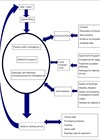Audiology features
The lessons in setting up a community ENT service in the NHS
Sudeb Mandal, a GP with special interest in ENT, talks about the novel approach taken in the community to deliver ENT services in Kent in the UK. The Kent Community ENT service was born with the vision to bring together...






